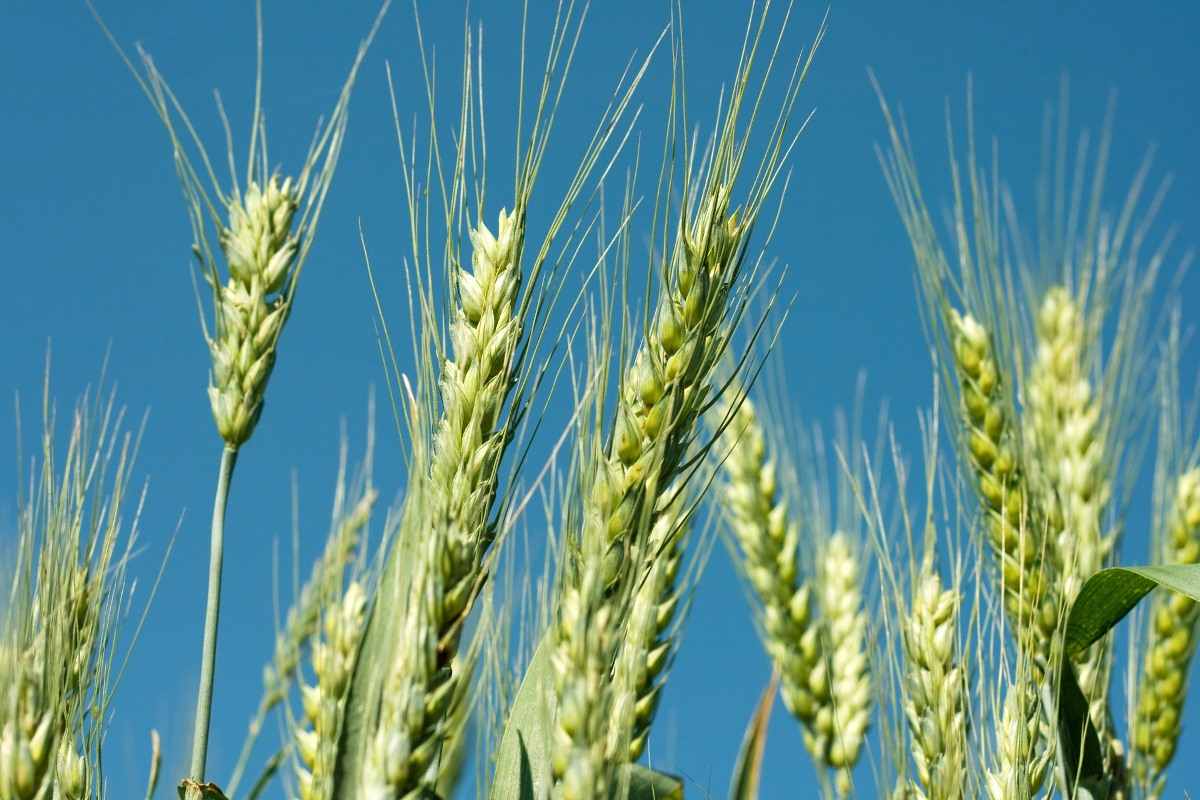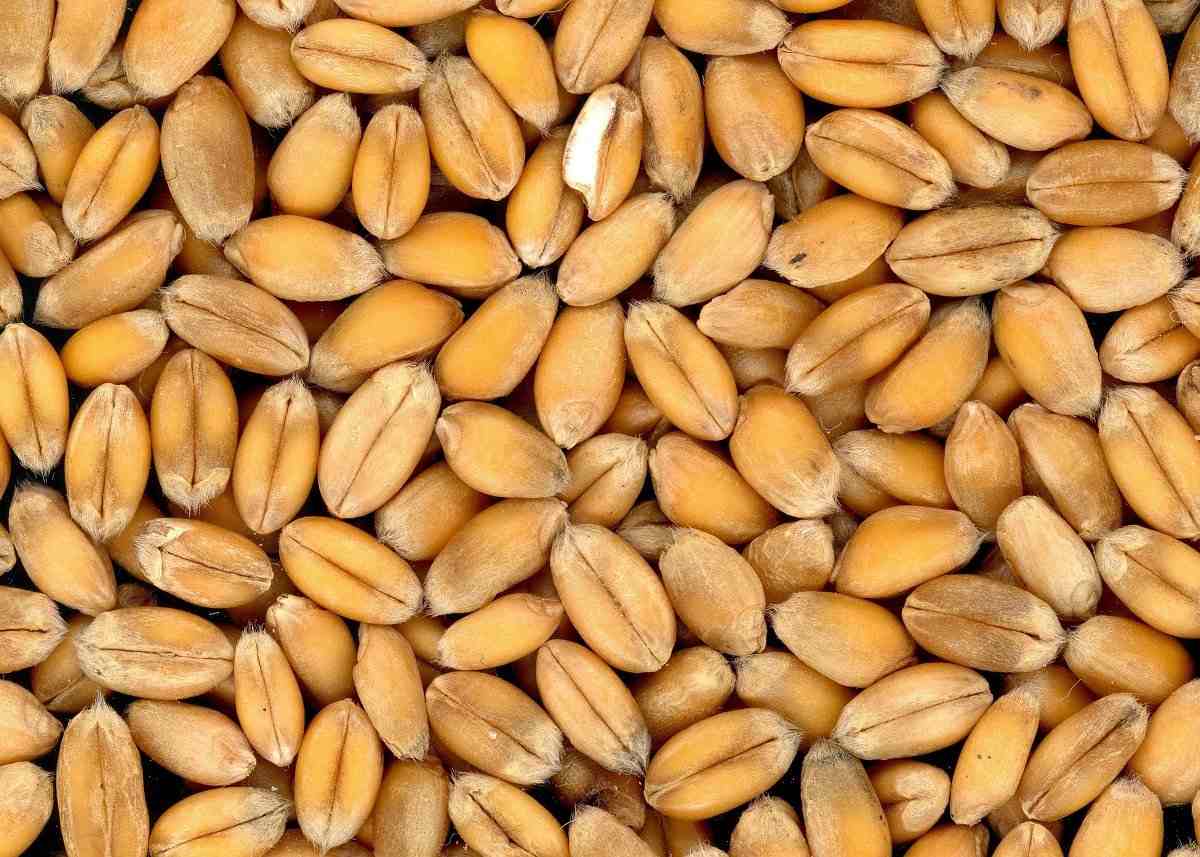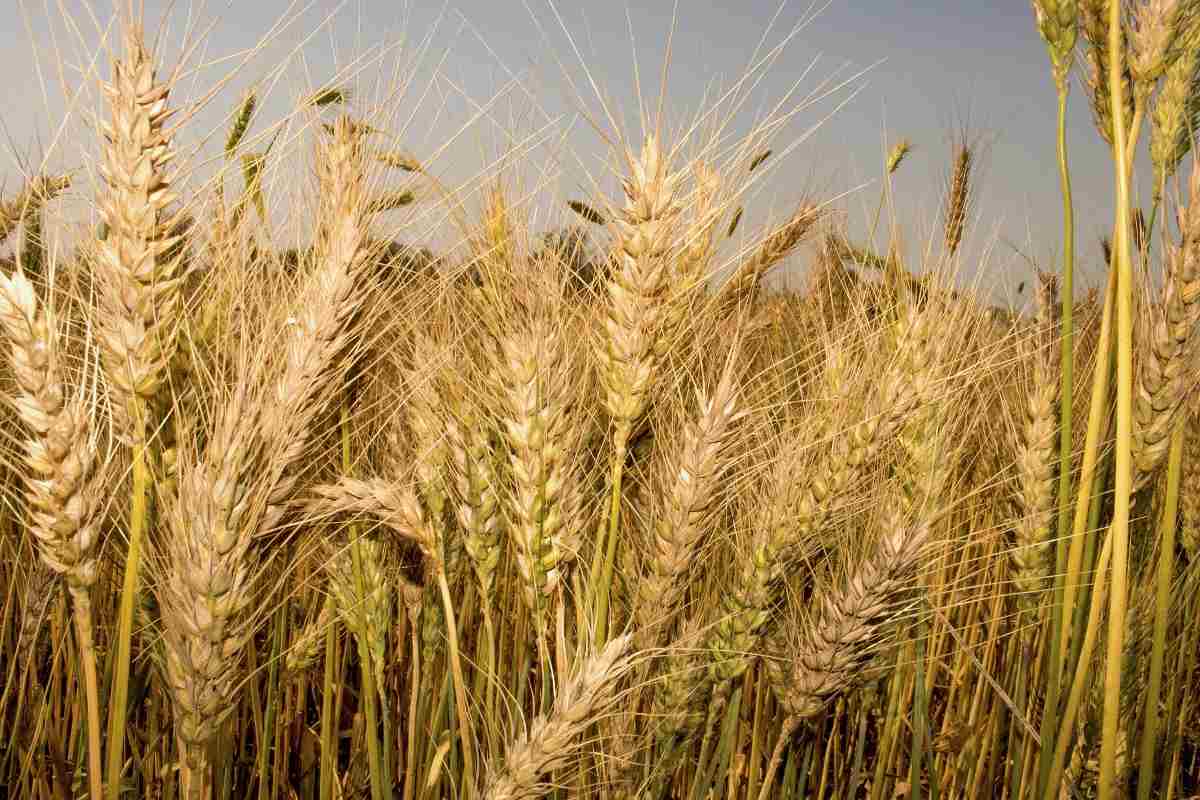Organic Wheat Farming
Wheat is the second most important cereal crop of India and plays a dynamic role in the food and nutritional security of the country. Wheat has played a very important role in stabilizing food grain production in the country over the past few years. With the increasing population, the food requirement of the world is also increasing rapidly. And Wheat is an important food crop that plays a key role in meeting the world food requirement.
A Step by Step Guide to Organic Wheat Farming, Cultivation Process

Organic agriculture is an ecological production management system that promotes and improves biodiversity, biological cycles, and soil biological activity. It is depending on minimal use of off-farm inputs and on management practices that restore, maintain, and improve environmental harmony. Growing Wheat organically means by sustainable methods that exclude the use of standard commercial fertilizers, preservatives, synthetic pesticides, and growth regulators. Organic farmers rely on crop rotations, animal manures, crop residues, legumes, green manures, mechanical cultivation, off-farm wastes, mineral-bearing rocks, and biological pest control to maintain soil health, supply plant nutrients, and minimize insects, weeds, and diseases
Growing organic Wheat must be seen as only one component of an entire farm system. Continuous Wheat cropping, or short rotations with another crop and no pasture phase, are unlikely to be accepted as a sustainable organic farming system. So, organic Wheat production will also involve growing other organic cereal, pulse, or oilseed crops in rotation with Wheat. Soil-regenerating pasture phases will also be included. Inter-planting or rotating crops with different growth habits, and using crop varieties suited to specific land types can add diversity to the entire farm and favor the establishment of a more balanced ecology which prevent conditions favoring disease and pests.
Different Types of Wheat
After you have decided how much Wheat to plant, you will need to decide which type to plant. It’s easy to get confused about the types of Wheat. Winter Wheat is planted in the fall and harvested from mid-May in the South to late July in the North. Spring Wheat is planted in the spring season and harvested in the fall. Both winter and spring Wheat are further divided into soft Wheat (lacking a high gluten content and used mainly for crackers and pastries), hard Wheat (with a high gluten content and used for bread), and durum wheat.
Classification of Indian Wheat;
1. Emmer Wheat – This type was reported to be grown in the south i.e. Maharashtra, Tamil Nadu, and Karnataka. It is also grown in Spain, Italy, Germany, and Russia.
2. Macroni Wheat – It is the best Wheat for drought conditions or under restricted irrigated conditions of Punjab, M.P., Karnataka, Tamil Nadu, Gujarat, West Bengal, and H.P. It is used for semolina preparation.
3. Common Bread Wheat – Bread Wheat is typical Wheat of alluvial soils of Indo-Gangetic plains i.e. Uttar Pradesh, Punjab, Bihar, and parts of Rajasthan. The bulk of the Indian crop, so, consists of this type.
4. Indian Dwarf Wheat – This Wheat belongs to the club Wheat of western countries. This is found in limited areas of M.P., U.P., of India and Pakistan. These are characterized by very short and compact heads having a shorter grain.
5. Triticum aestivum – This is the type currently grown in India in almost all the Wheat-growing zones. It is used mainly for bread purposes.
Choose a Good Location for Wheat Farming
A significant part of Wheat farming is the selection of an appropriate place. You must look for a place that has fertile soil for Wheat farming. Soil with a loam texture, good structure, and moderate water holding capacity are some factors that you must consider to grow Wheat.
Organic Soil Preparation for Wheat Farming
The soil must be prepared properly before starting Wheat farming. For doing this you can plough the soil either with disc or mouldboard plough. Then arrange the soil by giving one deep plough, followed by 2 to 3 light ploughing and planking. Now add natural fertilizers to it. For commercial Wheat farming, an average of 50 kg Nitrogen, 25 kg Phosphorus and 12 kg Potash is sufficient in one acre of land. Add more organic contents while preparing the soil.
Soil Fertility – Soil pH value is very important for a high-yielding wheat crop. Low soil pH value can result in poor development and growth. High soil pH value, particularly on course-textured soils, can result in manganese deficiencies. Wheat that yields 65 bushels per acre takes up about 45 pounds of phosphate per acre (most of which is removed with the grain) and about 135 pounds of potash per acre. Organic Wheat is a moderately heavy feeder, but not as heavy as corn. For best yield results, an organically approved nitrogen source (such as manure, compost, or a tilled-in legume) should be added at or before planting and again in the spring. A Wheat crop yielding 65 bushels per acre will take up around 70 pounds of nitrogen per acre.
Organic management seeks to maximize the contributions of on-farm resources such as composts, animal manures, and green manures to soil fertility. Though purchased off-farm nutrients including mineral fertilizers, fortified composts, and plant and animal meals may be necessary to ensure adequate nutrient availability during the transition to an organic program. Building soil organic matter enhances nutrient availability, as well as soil moisture-holding capacity, and can aid in preventing the buildup of soil-borne plant diseases. An important part of an organic soil-building program is the rotation of crops, coupled with the use of cover crops and green manures.
Seed Quality in Organic Wheat Farming

Utilizing good quality Wheat seed for planting is the foundation for obtaining excellent germination and stand establishment. Best quality seed is true to variety, free of other crop seeds, weeds, disease, foreign material, and has plump, dense kernels of high germination. Seed quality is one of many factors that affect forage production and grain yield and can be very important when planting in poor conditions, such as dry soils, deep planting, or late planting. Growers may influence forage and grain yields with decisions relating to the quality of seed that is to be planted.
The Seed Rate and Spacing in Organic Wheat Farming
The seed rate may need to be increased for organic production to ensure good early coverage. Organically grown Wheat can exhibit somewhat slower early growth rates compared to conventionally grown Wheat.
A good stand of Wheat is the best defence against weeds and cereal leaf beetle and is the best indicator of high yield potential. When planting on time with high-quality seed into conventionally tilled seedbeds, the target seeding rate is 30 to 35 seeds per square foot.
For irrigated, timely sown Wheat, a row spacing of 15 to 22.5 cm is followed, but 22.5 cm between the rows is considered to be the optimum spacing. Under irrigated late-sown conditions, the best row spacing is between 15 to 18 cm. For dwarf Wheat, the planting depth must be between 5 to 6 cm. Planting beyond this depth results in a poor stand. In the case of conventional tall varieties, the depth of sowing may be either 8cm or 9 cm.
Crop Rotation and Field Selection in Organic Wheat Farming
A well-designed crop rotational system is critical to the success of organic Wheat production and can diversify income sources.
Good crop rotations can serve many functions, including:
- Maintenance of soil condition (physical, chemical, and biological);
- Weed, pest and disease control;
- Management of soil moisture levels; and
- Pasture improvement.
Planting new Wheat into old Wheat stubble is always a bad idea. Many major small grain diseases are transmitted by old Wheat stubble. Short small grain rotations too put the crop at high risk to soilborne diseases such as take-all. Wheat 2 years in a row is a bad idea. The best way to avoid a Hessian fly problem is to plant at least one field (or one-fourth mile) away from last year’s Wheat stubble and to avoid planting near an early-planted Wheat cover crop. Fields with a history of Italian ryegrass or wild garlic must be avoided because there are no good organic methods for controlling these weeds.
Finally, fields in which infections by Wheat spindle-streak mosaic virus or soilborne mosaic virus have been identified require special consideration. These two viruses are vectored by a soil-dwelling microorganism. Of the two viruses, the soilborne mosaic virus is more damaging to yield. Once the virus and microorganism occur in a field, there are no practical ways to eliminate them. There are outstanding Wheat varieties that have resistance to one or both of these diseases. A field known to have both or one virus must either be planted with an appropriately resistant variety or removed from small grain production.
Organic fertilizer increases the availability of nutrients besides improving soil fertility. Well decomposed FYM or compost by 10 to 12.5 tonnes/ha must be applied at the time of preparation of land.
Wheat Planting Procedure
The Wheat seeds must be sown in about 4 to 5 cm inside the soil. Always put the seeds in rows and maintain a spacing of 20-22.5 cm between the rows. Planting or sowing the seeds in the right time is also important as delayed sowing can cause a gradual decline in the production. In India, it is generally sown at the end of October and early November. Also, the Wheat seeds are properly graded and thoroughly cleaned before sowing. Then, you can apply a fungicide for treating the seeds.
Weed Management in Organic Wheat Farming
All types of weed control in organic Wheat must be achieved in seedbed preparation before planting. Slight to no cultivation is used in Wheat after planting to kill emerging weeds, but a rotary hoe or tine weeder can be used before the crop emerges and again at the one-to-three-leaf stage. Though, weeds usually cause fewer problems in Wheat than in corn or soybeans because Wheat is a strong competitor against weeds and is drilled in narrow rows that quickly shade the soil.
- Economical Aquaculture: A Guide to Low-Budget Fish Farming
- 15 Common Planting Errors That Can Doom Your Fruit Trees
- How to Make Houseplants Bushy: Effective Tips and Ideas
- Innovative Strategies for Boosting Coconut Pollination and Yield
- Pollination Strategies for Maximum Pumpkin Yield
- The Complete Guide to Chicken Fattening: Strategies for Maximum Growth
Organic Pests and Disease Management in Wheat Farming
Being a plant, pests and diseases have always been a problem, although, with the use of pest and disease-resistant varieties and pesticides, the yield has increased phenomenally. Some common pests that affect the Wheat cultivation are Stripe Rust or Yellow Rust, Powdery Mildew, Aphids, Head Scabs, Army Worm, Termites, etc. Most of them can be taken care of with some added vigil and judicious use of pesticides.
Armyworms infest small grains, generally Wheat, from late April to mid-May. They can cause serious defoliation, injury to the flag leaf, and head drop. Few cultural management options are available for armyworms. Organic growers have the choice of using an insecticide approved for organic production or accepting the feeding of armyworms in emergencies.
Several management strategies that combine to contribute to the prevention of pest and disease problems:
- resistant varieties;
- soil fertility balance;
- crop rotation and bio-fumigant crops;
- ecological cycles and beneficial predators; and
- biological control agents and other acceptable substances.
Wheat varieties known to be resistant to pest or disease problems are an obvious first choice as a preventative measure. The susceptibility or resistance of different Wheat varieties is generally well known when grown under conventional farming systems, but their performance has not been well studied under organic farming systems.
The effect of soil conditions on plant growth is considered a crucial factor in plant susceptibility or resilience to pest and disease attack. Poor plant growth or imbalanced growth (due to soil conditions) can make plants less resilient and more susceptible to pest and disease attack.
Also, soil with good biological activity can provide a level of biological control over soil-borne pests or disease. Major diseases affecting Wheat crop are powdery mildew, smut, stem rust, foliar blights, and bunts. They can be taken care of by;
- Following a timely sowing cycle
- Solar treatment of seeds before sowing
- Using resistant varieties
- Uprooting the affected plant and burning it
When and How to Harvest Wheat
When the Wheat plant reaches its final stage in the growing procedure, meaning it is dry enough and no green is showing, it is ready to be harvested. The crop is harvested when grains become hard; straw becomes golden yellow, dry, and brittle. The plants are harvested manually with the help of sickle early in the morning. Harvested plants are tied into bundles and then carry to the threshing floor for heaping.
You should not miss this: Black Rice Cultivation.

Harvesting starts when the leaves and stem turn yellow and become fairly dry. Remember that the Wheat must be harvested before it is dead ripe to avoid loss in yield. Thus, timely harvesting is necessary for good quality as well as the maximum production of Wheat. When the moisture content in the Wheat reaches about 25 to 30%, then the Wheat is ready to be harvested. A combine harvester is available in the market for harvesting, threshing, and winnowing of the Wheat crop in a single operation.
In case if you are interested in this: Tomato Sauce Making Business Profit In India.